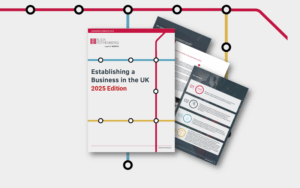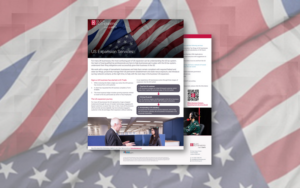HMRC Investigations – Top Triggers
Partner and Tax Risk & Dispute Resolution expert Fiona Fernie examines common triggers which could spark an investigation from HM Revenue & Customs (HMRC)
There is a whole raft of reasons why taxpayers might be subjected to an investigation by HMRC. Although there are occasions on which enquiries are started where HMRC’s interest could not have been avoided (for example where a tax return enquiry is raised on a random basis), there are also a number of ’triggers’ which might spark an investigation, some of which can be managed by taxpayers to minimise the possibility.
Examples of the triggers which can be easily managed are:
- Late submission of tax returns and payments – particularly if this happens repeatedly.
- Use of estimates and provisional figures – again particularly if this is a frequent occurrence.
- Large unexplained fluctuations in reported income and expenses.
- Extremely low reported earnings – often combined with a lifestyle which makes the reported amounts improbable. Indeed, any kind of mismatch between apparent wealth and income reported in tax returns.
Reporting deadlines are (broadly) nine months after the end of the period for which the report is being made. To avoid one of the above triggers giving rise to an investigation, taxpayers should give themselves plenty of time to locate and collate the information required to submit their returns rather than leaving it all to the last minute.
Early attention to the collation of information is also likely to reduce the need to use any kind of estimated figures and ensure timely submission. Furthermore, if it does prove necessary to use estimates, or indeed where earnings fluctuate hugely year on year, it is advisable to ensure that an explanation is included in the return to pre-empt unnecessary HMRC scrutiny.
Other common triggers for HMRC enquiries may not be pre-emptively managed so easily, so it is therefore critical that taxpayers keep good quality contemporaneous records which can be used to explain issues of concern to HMRC.
Common triggers of this kind relating to businesses include:
- Businesses operating at a loss for several years/perceived lack of commerciality.
- Business results which deviate from the norm for similar businesses e.g. lower gross profit margin than is usual for the industry.
- Transactions not carried out under formal written agreements.
- Business is in a high-risk sector such as construction or property development.
Clearly, a business cannot help being in a high-risk sector but the more detailed the records are and the more closely they are monitored on an ongoing basis, the easier it will be to rebut allegations that the tax computations are incorrect for any reason. That logic also applies to transactions carried out under oral agreements – even if such agreements are common industry practice.
Businesses should not forget that useful contemporaneous records are not just those which document what actually happened from an accounting perspective. For example, business plans which address the underlying model (e.g. high turnover but low profit margin) and why this might be appropriate for the particular company despite industry norms, or forecasts which show the point at which the business is likely to move into profit and the reasons for that can be incredibly helpful in helping HMRC understand that the initial trigger which prompted an enquiry has an appropriate explanation.
Would you like to know more?
If you have received an HMRC enquiry letter notifying you of an of an upcoming investigation, our Tax Risk & Dispute Resolution team can help.
To discuss any of the above and how it might apply to you as either a business or an individual, please get in touch with your usual Blick Rothenberg contact or Fiona Fernie in our Tax Risk & Dispute Resolution team using the details on this page.
Find out more about our Tax Risk & Dispute Resolution services here.

You may also be interested in

Is the End of the Triple Lock Pension Inevitable?

The UK is a stable, open and innovation-driven market for Japanese firms to invest in













